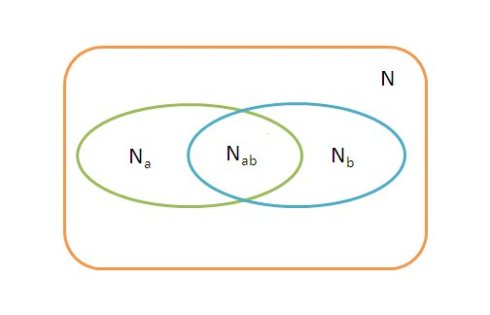Acceleration is a vector quantity that is defined as the rate at which an object changes its velocity. An object is accelerating if it is changing its velocity.
More...Newton's second law of motion can be formally stated as follows:
The acceleration of an object as produced by a net force is directly proportional to the magnitude of the net force, in the same direction as the net force, and inversely proportional to the mass of the object.
This verbal statement can be expressed in equation form as follows:
The above equation is often rearranged to a more familiar form as shown below. The net force is equated to the product of the mass times the acceleration.
Suppose there are objects out of which there are exactly
objects of type
and
objects of type
. Also, suppose there are exactly
objects that are of both type
AND
. Then, how many objects are NOT of type
OR
?
 More...
More...

A Sequence is a set of things (usually numbers) that are in order.
In an Arithmetic Sequence the difference between one term and the next is a constant.
Example: 1, 4, 7, 10, 13, 16, 19, 22, 25, ...
This sequence has a difference of 3 between each number.
Suppose in an arithmetic sequence: More...
A "quotient" is the result of a division problem. For example: For 6/3, "2" is the quotient, 6 is the dividend, and 3 is the divisor.
Sometime when dividing, there is something left over, it is called the remainder. For example: For 7/3, "2" is the quotient, 7 is the dividend, 3 is the divisor, and "1" is the remainder. 7/3 = 2 R 1.
dividend = divisor * quotient + remainder
For example:
7 = 3 * 2 + 1
More...Arithmetic mean (average) = (X1+X2+X3+...+Xn) / n
Geometric mean = (X1 * X2 * X3 * ... * XN)1/N
Here are the links to calucating how much you will need to attend Ivy League universities and how much financial aid you can expect. Run these financial aid calculators and see how it all shakes out for your family.
Harvard: https://college.harvard.edu/financial-aid/net-price-calculator
Yale: http://admissions.yale.edu/yale-net-price-calculator
Princeton: http://admission.princeton.edu/financialaid/estimator